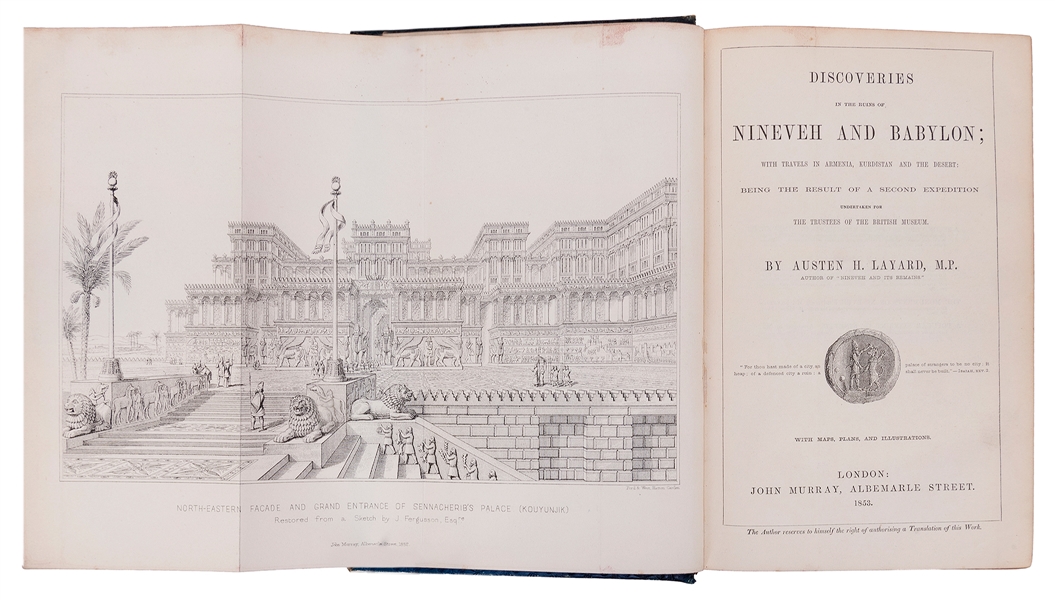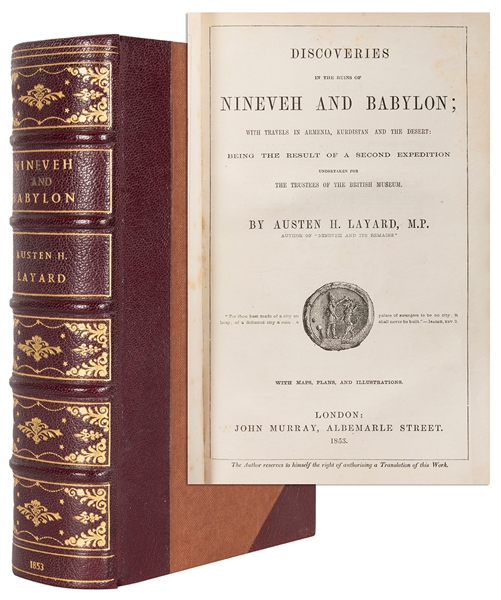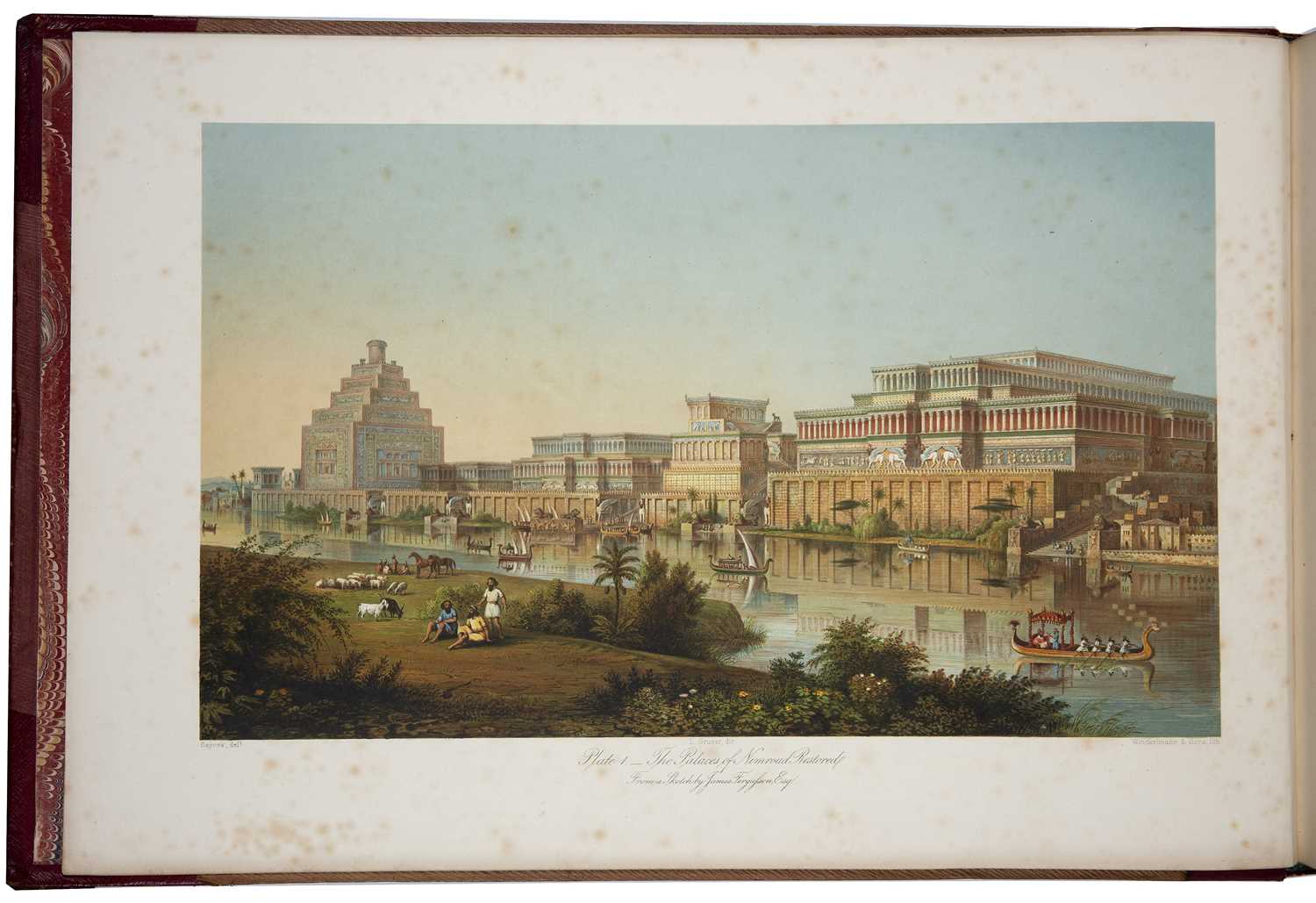The Monuments of Nineveh. From Drawings Made on the Spot. [First and] Second Series. London: John Murray 1853. 2 volumes. Folio (568 x 352 mm). [4], 10; [4], 4 pp. Illustrated with additional chromolithographed title to first series, and 172 large lithographed plates, including 13 colored, several tinted, and some folding. Modern half-morocco, gilt titles and call numbers to spine. Plates overall clean with scattered soiling to margins (more frequent in series 2), a few short marginal tears, soiling and tears to text, repairs to title and intro first series, repairs to description of plates second series. Provenance: City of Leeds Public Libraries (engraved armorial bookplates; blindstamp to upper corner of each plate; call slips bound in); E.D. Maroon (ownership signature penciled to title first series). The discoveries made by Layard on this excavation caused a sensation, and provided the British Museum with some of its most well-known treasures, including the Black Obelisk of Shalmaneser III and several pairs of human-headed winged lions and bulls. However, what Layard believed to be Nineveh was actually Nimrud; he would later discover the true site of Nineveh while excavating the citadel mound at Kuyunjik. The first series was first published in 1849. See Sorensen, Dictionary of Art Historians.
The Monuments of Nineveh. From Drawings Made on the Spot. [First and] Second Series. London: John Murray 1853. 2 volumes. Folio (568 x 352 mm). [4], 10; [4], 4 pp. Illustrated with additional chromolithographed title to first series, and 172 large lithographed plates, including 13 colored, several tinted, and some folding. Modern half-morocco, gilt titles and call numbers to spine. Plates overall clean with scattered soiling to margins (more frequent in series 2), a few short marginal tears, soiling and tears to text, repairs to title and intro first series, repairs to description of plates second series. Provenance: City of Leeds Public Libraries (engraved armorial bookplates; blindstamp to upper corner of each plate; call slips bound in); E.D. Maroon (ownership signature penciled to title first series). The discoveries made by Layard on this excavation caused a sensation, and provided the British Museum with some of its most well-known treasures, including the Black Obelisk of Shalmaneser III and several pairs of human-headed winged lions and bulls. However, what Layard believed to be Nineveh was actually Nimrud; he would later discover the true site of Nineveh while excavating the citadel mound at Kuyunjik. The first series was first published in 1849. See Sorensen, Dictionary of Art Historians.















Testen Sie LotSearch und seine Premium-Features 7 Tage - ohne Kosten!
Lassen Sie sich automatisch über neue Objekte in kommenden Auktionen benachrichtigen.
Suchauftrag anlegen